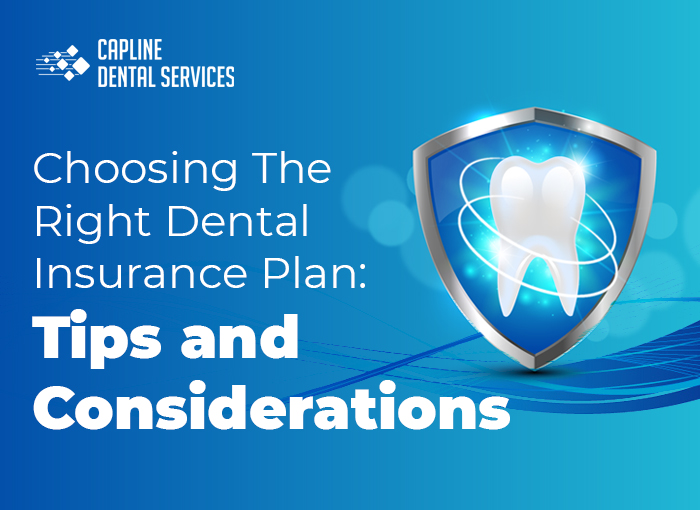
Just having great oral hygiene is not a reason to forgo dental insurance coverage. One can rely on dental insurance claims for coverage of expenses related to regular checkups, cleanings, x-rays, and other dental services.
For some patients, the cost of dental coverage may exceed the amount that one directly pays to the dentist. This could be the case if there are only a couple of visits a year, primarily for routine cleanings and checkups. A dental plan can make sense if there are family members who need dental care or if major dental work may be required in the foreseeable future. It is important to note that any plan is subject to dental insurance verification.
A few points to be considered prior to selecting a dental insurance plan:
Annual Limit:
The annual limit is the total dollar amount that a patient can receive through a dental plan during the plan year. If one opts for a family plan, there could be separate limits for each individual and for the family as a whole. If the total dental costs exceed this limit, then the patient will have to cover the exceeded amount.
Family Considerations:
Do you have young children, or is a pregnancy planned for the near future? The family structure and characteristics will significantly influence the choice of dental insurance. Younger kids might need regular professional cleanings, or teens might require orthodontic treatments like braces. The demands for dental care can evolve over time. Such factors play a decisive role when choosing a dental plan.
Deductible Amounts of the Plan:
This is the amount that the patient has to pay out of pocket before the dental plan begins coverage. For instance, if the deductible is USD 120 and the initial dental visit costs USD 200, the amount of USD 80, which is above the deductible, will be entitled to coverage, subject to coinsurance or copayments. Some services, such as cleanings, might be covered without a deductible.
Options for Group Dental or Savings Plans:
Some dental professionals advocate for group dental plans, which can offer substantial savings for many families. These plans require a membership fee to access discounted rates for specific dental services within a group. It's important to note that these plans may not cover all dental treatments, but they are a worthwhile consideration for those seeking to reduce dental care costs.
Coinsurance:
This is a form of cost-sharing that outlines what percentage of dental costs are covered by the plan and what portion the patient must pay. For example, a plan might cover 85% of eligible expenses after accounting for the deductible and copayment, if applicable. The patient would then be responsible for the remaining 15%.
Possible Exclusions:
Some plans might not cover all services offered by a dental practice. Cosmetic procedures, such as tooth whitening, are often excluded.
Cap on the Number of Visits:
Some dental plans may limit the number of services or how often a specific service will be covered. For instance, a plan might cover a maximum of two cleanings in a calendar year or one cleaning every six months.
Pre-existing Conditions:
Some dental plans might not cover conditions that a patient or family member had before enrolling in the plan. For example, if a patient had a missing tooth before the current plan was activated, then the plan might not cover treatments related to that pre-existing condition.
Plan Coverage Details:
It's essential to thoroughly review the exact coverage of the dental plan before finalizing it. Understand what services are covered, such as preventive care, basic procedures, cleanings, major procedures, etc. Also, evaluate the services not covered by the plan. Cosmetic dentistry, for instance, is generally not covered by many dental plans. Additionally, some plans might have a waiting period before certain services are covered.